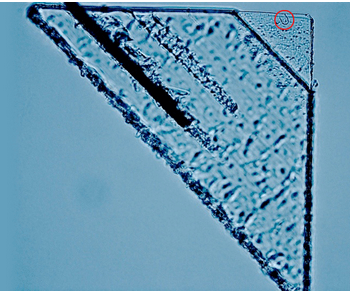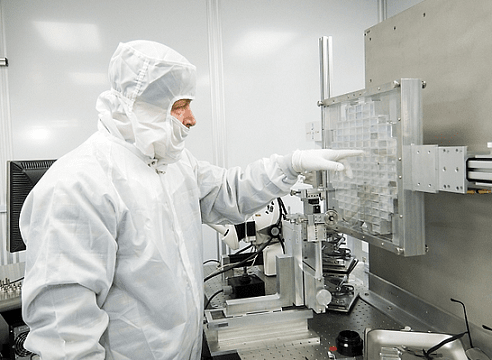NASA Scientists Discover Interstellar Space Particles Captured By Stardust Space Probe
NASA's Stardust space probe was launched in 1999, with the primary goal to collect samples of a comet dust and return them to Earth for analysis. But, during the spacecraft’s journey, its handlers turned the sample collector, shaped like a tennis racket, in order to face the area where they could trap the particles that would be streaming into the solar system from interstellar space. After the spacecraft’s return to Earth in January 2006, the scientists started studying more than 50 spacecraft debris particles captured in aerogel, a silica-based foam, of the sample collector so that these particles could explain the origin and evolution of interstellar dust. NASA scientists have now found seven rare dust particles that are quite a lot distinct in terms of their chemical composition and structure as they appear to be from outside the solar system.

The smaller dust particles are distinct from the larger ones not only in size but also in their history. The size varies from about two microns (thousandths of a millimetre) in diameter to 35 micron in length. According to the scientist, these seven particles were possibly created in a supernova explosion which may have occurred millions of years ago. After that they might have been remolded by various exposures of extreme space environment.

The volunteers, who call themselves "Dusters†from University of California, Berkeley scrutinized more than a million images as a part of their citizen-science project and also helped in discovering the tracks of the dust particles.
The research report titled #-Link-Snipped-# is published in August 15 issue of the journal Science. Twelve more papers related to the particles will appear in the next issue of the journal Meteoritics & Planetary Science.
Source: <a href="https://www.nasa.gov/press/2014/august/stardust-team-reports-discovery-of-first-potential-interstellar-space-particles/#.U-75P_mSygx" target="_blank" rel="nofollow noopener noreferrer">Stardust Team's Discovery of Potential Interstellar Space Particles | NASA</a>
The smaller dust particles are distinct from the larger ones not only in size but also in their history. The size varies from about two microns (thousandths of a millimetre) in diameter to 35 micron in length. According to the scientist, these seven particles were possibly created in a supernova explosion which may have occurred millions of years ago. After that they might have been remolded by various exposures of extreme space environment.
The volunteers, who call themselves "Dusters†from University of California, Berkeley scrutinized more than a million images as a part of their citizen-science project and also helped in discovering the tracks of the dust particles.
The research report titled #-Link-Snipped-# is published in August 15 issue of the journal Science. Twelve more papers related to the particles will appear in the next issue of the journal Meteoritics & Planetary Science.
Source: <a href="https://www.nasa.gov/press/2014/august/stardust-team-reports-discovery-of-first-potential-interstellar-space-particles/#.U-75P_mSygx" target="_blank" rel="nofollow noopener noreferrer">Stardust Team's Discovery of Potential Interstellar Space Particles | NASA</a>
0
